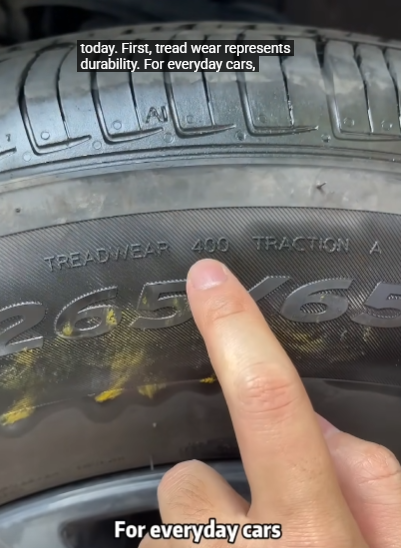
Buying new tires for your car is one of those essential expenses that often sneaks up on you. Whether you’re replacing worn-out tires or upgrading for better performance, it’s no secret that tires can be costly. However, with the right knowledge and approach, it’s entirely possible to buy high-quality car tires at a low price. In this guide, we’ll explore practical strategies to help you get the best bang for your buck while ensuring your safety and vehicle performance aren’t compromised.
1. Know What You Need
Before you even begin shopping, understand what kind of tires your car needs. Check your car’s owner’s manual or the tire information sticker usually located on the driver’s side door jamb. This will tell you the recommended tire size, load index, and speed rating.
There are different types of tires for different purposes:
- All-season tires: Good for everyday driving in moderate climates.
- Summer tires: Ideal for warm weather and high-performance driving.
- Winter tires: Designed for snow and ice conditions.
- All-terrain or off-road tires: Built for rugged surfaces.
Knowing what fits your driving style and climate will help you narrow down choices and avoid unnecessary spending.

2. Set a Realistic Budget
Define what you mean by “low price.” Cheap doesn’t always mean good value, and expensive doesn’t always mean better. A good tire purchase balances price, performance, and longevity. High-quality tires generally last longer and offer better fuel efficiency and safety, which saves you money in the long run. Set a budget that prioritizes safety and durability, but leaves room for smart savings.
3. Shop Around and Compare Prices
Never settle for the first offer you find. Use multiple sources to compare tire prices:
- Local tire shops: Visit or call to ask about their best deals.
- Online retailers: Websites like Tire Rack, Discount Tire, Amazon, or Walmart often have competitive prices and seasonal discounts.
- Manufacturer websites: Sometimes the best rebates and promotions come directly from tire brands like Michelin, Goodyear, or Bridgestone.
Be sure to factor in shipping costs, installation fees, and taxes. Some places offer free shipping or installation, which could make a big difference in the final price.
4. Look for Promotions and Rebates
Tire manufacturers often run promotional offers during certain times of the year—especially during spring and fall, when people are preparing for seasonal changes. These deals may include:
- Mail-in rebates
- Instant discounts
- Buy 3 get 1 free offers
- Free installation or alignment checks
Visit manufacturer and retailer websites to find these offers. Signing up for newsletters from tire stores can also keep you in the loop for upcoming sales.

5. Consider Buying Used or Take-Off Tires
If your budget is tight, you might consider high-quality used tires. Many tire shops sell gently used tires that still have plenty of tread life left. “Take-off” tires are another good option—they’re basically new tires that were removed from a new vehicle because the owner wanted a different type or brand.
When buying used tires:
- Check for uneven wear, cracks, bulges, or punctures.
- Make sure the tires are less than 6 years old (check the DOT code).
- Confirm that all tires are the same brand, size, and tread depth.
This route can save you a lot of money, but always be cautious and prioritize safety.
6. Buy Off-Season
Timing your tire purchase can lead to substantial savings. Tire demand varies by season:
- Winter tires are cheaper in summer
- Summer or all-season tires may be cheaper during winter
Retailers often discount last season’s stock to make room for new inventory, which is the perfect time to grab high-quality tires at a discount.
7. Choose Mid-Tier Brands
Top-tier brands like Michelin, Bridgestone, or Continental are known for exceptional quality—but they also come with higher prices. However, many mid-tier brands offer excellent performance and safety at a more affordable price. Look for brands like:
- General Tire
- Hankook
- Kumho
- Cooper
- Falken
These brands often manufacture tires in the same factories as premium ones and use similar technologies but are priced more competitively.

8. Use Tire Ratings and Reviews
Even if you’re shopping on a budget, don’t sacrifice quality. Look for tire reviews and ratings on sites like Tire Rack, Consumer Reports, and user reviews on Amazon or Walmart. Pay attention to:
- Traction performance
- Wet and dry handling
- Tread life
- Noise levels
- Fuel efficiency
User feedback can help you find affordable tires that still perform well.
9. Ask About Warranties
Some budget tires come with warranties that rival those of premium brands. A good tire warranty can include:
- Mileage warranty
- Road hazard protection
- Free replacement for defects
This gives you extra value and peace of mind in case anything goes wrong. Always read the fine print to understand what’s covered.
10. Watch Out for Hidden Fees
Sometimes a tire seems cheap until you’re hit with unexpected costs. Ask in advance about:
- Installation
- Tire balancing
- Valve stem replacement
- Disposal of old tires
- Alignment services
Ask for a total quote before committing to a purchase. Some tire shops offer bundled deals that include everything, which may be more cost-effective than itemized pricing.

11. Use a Tire Financing Program Wisely
Some stores offer financing or “buy now, pay later” options. While this can help in a pinch, make sure you understand the interest rates and payment terms. Choose this option only if you’re confident in your ability to pay on time—otherwise, the added fees could wipe out your savings.
Conclusion
Buying high-quality car tires at a low price is not only possible—it’s smart. By understanding your vehicle’s needs, comparing prices, timing your purchase, and looking for deals, you can equip your car with reliable tires without draining your wallet.
Always prioritize safety and quality over the absolute lowest price. A little research and planning can help you save money while keeping your car running safely and efficiently. Tires are one of the most critical parts of your vehicle, and with the right approach, you can find the perfect balance between performance and affordability.



